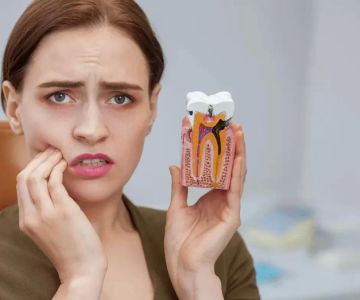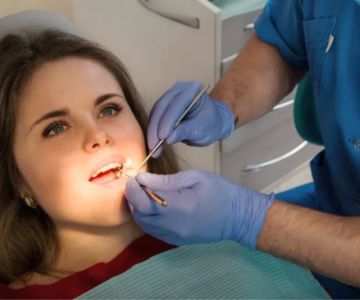
- Understanding the Types of Dental Injuries
- Immediate Steps to Take After a Dental Injury
- Long-Term Care and Follow-Up After Dental Trauma
- Real-Life Case Example: Managing a Dental Injury
Understanding the Types of Dental Injuries
A sudden dental injury can occur unexpectedly, whether from a sports accident, a fall, or even an unexpected blow to the face. To manage a dental injury effectively, it’s essential first to understand the types of injuries that can occur. Common dental injuries include chipped or broken teeth, dislodged teeth, and soft tissue injuries to the gums or cheeks.
For example, a common injury is a chipped tooth. While it may seem minor, a chipped tooth can cause discomfort, and if not addressed, it can lead to more significant problems like infection. Another common issue is a tooth that is knocked out, which requires immediate care to maximize the chances of saving the tooth.
Understanding these injuries will help you assess the situation and determine the appropriate response, which can make a significant difference in the outcome of the injury.
Immediate Steps to Take After a Dental Injury
When a dental injury happens suddenly, your immediate response is critical in reducing damage and ensuring the best possible outcome. Here’s a step-by-step guide on how to handle a dental injury effectively:
- Remain Calm: First, try to stay calm. Panicking can make the situation worse and affect your ability to respond efficiently.
- Control Bleeding: If there is bleeding, gently apply a clean cloth or gauze to the affected area. Press lightly until the bleeding stops. This is particularly important in cases of gum or soft tissue injuries.
- Assess the Damage: Check for broken or missing teeth, swelling, or pain. If a tooth is knocked out, try to retrieve it, and rinse it gently with water. Avoid scrubbing it, and if possible, place it back into the socket or store it in a clean container with milk.
- Pain Management: Over-the-counter pain relievers like ibuprofen or acetaminophen can help manage pain until you can get professional care.
- Seek Professional Help: As soon as possible, seek help from a dentist. In some cases, especially with a knocked-out tooth, the quicker you receive care, the better your chances of saving the tooth.
For example, during a hiking trip, I had a friend who tripped and chipped his tooth. He immediately stopped, assessed the injury, and used a clean cloth to manage the bleeding. After that, he called a nearby clinic, and with the quick response, he was able to get the necessary care to prevent further damage.
Long-Term Care and Follow-Up After Dental Trauma
After managing the initial shock and pain of a dental injury, long-term care and follow-up treatment are necessary to ensure proper healing and to prevent complications. This could include additional dental visits to ensure the tooth heals properly or to address any cosmetic concerns caused by the injury.
If a tooth was knocked out, a dentist may need to perform a root canal treatment to save the tooth. In the case of a chipped tooth, it may be necessary to restore the tooth with dental bonding, crowns, or veneers. Your dentist will advise you on the most appropriate course of action based on the severity of the injury.
During this period, continue to follow any care instructions provided by your dentist. This may involve avoiding certain foods, using a prescribed mouthwash, or maintaining a specific oral hygiene routine to protect the injured area.
Real-Life Case Example: Managing a Dental Injury
Take the case of Sarah, a competitive tennis player who suffered a sudden dental injury during a match. She took a hit to the mouth and immediately noticed that one of her front teeth was loose. Sarah remembered the importance of staying calm and quickly checked her tooth. She gently pressed it back into place and controlled the bleeding by biting down on a clean cloth. After that, she immediately sought professional care from a local dentist. Thanks to her quick thinking, the dentist was able to save the tooth and perform a successful treatment to restore its functionality and appearance.
This real-life scenario demonstrates how taking the right steps immediately after a dental injury can have a significant impact on the outcome. Having the knowledge of what to do in these situations can be the difference between saving a tooth and requiring more invasive treatments later.







 Westgate Dental Arts
Westgate Dental Arts Coventry Family Dental
Coventry Family Dental Familia Dental
Familia Dental Dr. Daniel S. Fife, DDS
Dr. Daniel S. Fife, DDS Dentistry At Suburban Square: Michael I. Wollock, DMD
Dentistry At Suburban Square: Michael I. Wollock, DMD Comfort Care Dental
Comfort Care Dental The Importance of Oral Health Education During Pregnancy for a Healthy Pregnancy
The Importance of Oral Health Education During Pregnancy for a Healthy Pregnancy Why Skipping Dental Checkups Can Lead to Bigger Oral Health Problems
Why Skipping Dental Checkups Can Lead to Bigger Oral Health Problems Advantages of Porcelain Dental Restorations
Advantages of Porcelain Dental Restorations Best Tips for Brushing Your Teeth Properly for Healthy Gums: Essential Techniques for Oral Health
Best Tips for Brushing Your Teeth Properly for Healthy Gums: Essential Techniques for Oral Health How Can Diabetes Cause Tooth and Gum Problems? Preventing and Managing Oral Health Issues
How Can Diabetes Cause Tooth and Gum Problems? Preventing and Managing Oral Health Issues Healthy Habits for Promoting Good Oral Health and Hygiene: Tips for a Healthy Smile
Healthy Habits for Promoting Good Oral Health and Hygiene: Tips for a Healthy Smile